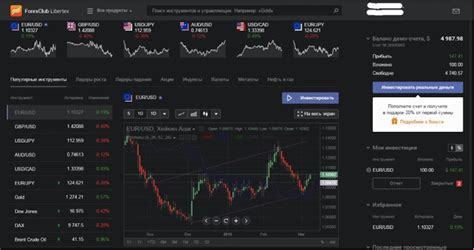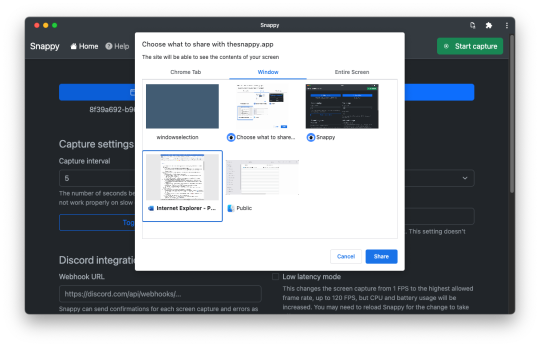#Python function advantages
Explore tagged Tumblr posts
Text
Day-6: Python Functions
Day-6: Python Fuctions - Python Boot Camp 2023
Introduction to Python functions Python functions are blocks of reusable code designed to perform specific tasks. They allow you to break down complex programs into smaller, manageable pieces. Functions enhance code reusability and readability, making it easier for developers to maintain and understand their programs. In this article, we will explore various aspects of Python functions, from…

View On WordPress
#Built-in functions in Python#Function annotations in Python#Function definition in Python#How to call a function in Python#Lambda functions in Python#Python decorators#Python function advantages#Python function best practices#Python function disadvantages#Python function examples#Python function parameters#Python function scope and lifetime#Python function tutorial#Python functions#Recursive functions in Python
0 notes
Text
Worldbuilding: Running Hot and Cold
So, of the creatures you’ve invented for your world - are they ectothermic or endothermic?
“Cold-blooded” and “warm-blooded” are the colloquial terms for it. They’re... not exactly wrong, but incomplete. A “cold-blooded” critter simply does not have internal workings devoted to keeping it inside a specific band of temperatures No Matter What. (Though some may in fact be able to keep parts of their body much warmer or cooler than their surroundings - see the swordfish, among others, with their rete mirabile of blood vessels to keep their eyes warm in the sea to spot prey.) On the other hand a “warm-blooded” critter (birds and mammals being our key contenders) not only has the inner workings to do so, it absolutely must, or perish.
If you’re not sure what your critter should be, consider that these are two different ways of adapting to life with distinct advantages and disadvantages. Sort out which of those fit your critter best, and you should know what to pick.
First, let’s take ectothermy. As have most animals in the history of the world. It’s the most common way of life for a reason: it works. Since ectotherms rely on the outside world to keep them warm or cool, they don’t need to spend any energy on maintaining a constant internal temperature. This makes needing to eat much, much less of a worry; critical if you’re in a low-prey environment. Full-grown Nile crocodiles can pretty much live on only two wildebeest a year... and guess what? The herd’s migration usually takes them across particular rivers twice a year. Convenient!
(Herbivores prey on plants, algae, etc. Those, too, can be in short supply.)
Three distinct disadvantages, though. First, you have to make proteins that function at a wide range of temperatures; this costs extra resources. Second, your eggs are usually more temperature-sensitive than you are. Finding the right environment for them is critical. Third... if you really really need a fever, say to kill off a bacterial or fungal infection, you have to figure out how to get your environment to do the work. You have to give yourself a behavioral fever. Alligators, crocodiles, and their relatives will all do this by basking in the sun longer and more often than normal.
So. Endothermy. Apparently pounced on by both proto-mammals and some of the dinosaur lineages. This is a very resource-intensive strategy. You have to eat; you have to eat frequently. And if you get just a little too hot or cold inside, you die. A snake that drops down to 50 F inside may be perfectly fine, though it probably doesn’t want to freeze. A human whose internal temp drops to 85 F? That is nightmare territory and heading toward death. Why would any creature do this?
Look at the three disadvantages of ectothermy. An endotherm doesn’t make proteins that function across the temperature spectrum; it doesn’t have to. All its building blocks can be finely tuned to the temperature it’s supposed to be, with a little wiggle room in case of, you know, a smidge too cool or too hot. This saves a lot of resources. Sensitive eggs? Can be kept with you, either in a nest you keep warm or even - gasp - internally. (Mammals are so metal.) Fungus and bacteria? Get hit by a blazing reception of fiery fevers and fine-tuned immune systems. They can kill us, but numbers-wise, ectotherms are at far greater risk.
And evolution, very often, is a numbers game. It doesn’t take much of an advantage to pull ahead. It only takes a small, constant advantage over time.
Of course, there are exceptions. Like hibernating hummingbirds (some let their temp drop to 40 F every night) and pythons shivering to keep eggs 5-10 degrees warmer than outside air (as the Everglades snarl in frustration). And then there are paleontologist speculations that the really big sauropods and some other dinosaurs had mesothermy, which doesn’t seem to exist on the planet today because the (probably asteroid impact) disaster at the K-T boundary wiped out every critter past a certain size, and you had to be sauropod-size to make it work.
Consider all these, when you make up a critter for your characters to deal with. It matters to how they behave - and that makes a big difference when your heroes might have to run through a pack of them!
7 notes
·
View notes
Text
Best Platforms to Trade for Forex in 2025
Forex trading continues to captivate traders worldwide, offering a dynamic and lucrative avenue for financial growth. In 2025, identifying the best platforms to trade for forex has become more crucial than ever, as technology and market demands evolve. From user-friendly interfaces to advanced tools for technical analysis, these platforms are tailored to meet the needs of both novice and seasoned traders. Whether you're diving into major currency pairs, exploring exotic options, or utilizing automated trading strategies, choosing the right platform is the foundation for success.

Core Features of Top Forex Trading Platforms
Forex trading platforms in 2025 must combine advanced functionality with accessibility to meet diverse trader needs. The following core features highlight what distinguishes the best platforms.
User-Friendly Interface
A user-friendly interface enhances efficiency and reduces errors, especially for beginners. Key features include:
Intuitive navigation for rapid trade execution.
Customizable layouts to match user preferences.
Comprehensive tutorials for ease of onboarding.
Efficient design with minimal lag, even during high volatility.
Example Platforms: MetaTrader 4 (MT4) and MetaTrader 5 (MT5) are renowned for streamlined interfaces designed to accommodate traders at all levels.
Comprehensive Charting Tools
Forex trading requires precision, and advanced charting tools are critical for analysis. The following charting tools enhance strategy formulation:
Drawing Tools: Support for trendlines and channels.
Indicators: Integration of MACD, RSI, Bollinger Bands, and Fibonacci Retracement.
Timeframes: Options to analyze data across multiple periods.
Custom Indicators: Flexibility to program and integrate personal strategies.
Automation and Algorithmic Trading
Automation is indispensable for modern forex trading. Platforms like cTrader and NinjaTrader excel with features like:
Pre-built Strategies: Ready-to-use templates for scalping and trend following.
Custom Algorithms: Integration with programming languages such as C# and Python.
Backtesting: Evaluate strategies with historical data.
Integration with APIs: Seamless syncing with advanced trading bots.
Mobile Accessibility

Forex traders increasingly require the flexibility of trading on-the-go. Mobile accessibility ensures:
Synchronization: Real-time updates between desktop and mobile devices.
Push Notifications: Alerts for market changes and trade execution.
Compact Design: Optimized for smaller screens without losing functionality.
App Examples: MT4 and MT5 apps, offering full trading capabilities on iOS and Android.
Key Takeaway: Platforms combining a robust desktop experience with seamless mobile integration empower traders with unmatched convenience.
The best forex trading platforms for 2025 excel in usability, advanced charting, automation, and mobile functionality. By integrating these features, platforms like MT5, cTrader, and TradingView offer versatile solutions for traders of all expertise levels.
Trading Instruments Supported by Leading Platforms
The diversity of trading instruments available on forex platforms is crucial for building effective strategies and achieving long-term trading success. This section explores the breadth and advantages of various trading instruments.
1. Major Currency Pairs
Major currency pairs, such as EUR/USD, USD/JPY, and GBP/USD, dominate forex markets due to their high liquidity and tighter spreads. Leading platforms like MetaTrader 5 and TradingView offer advanced tools for analyzing these pairs, enabling traders to capitalize on predictable movements.
Key Features:
High liquidity ensures minimal price fluctuations during trades.
Access to real-time market data for precise decision-making.
Supported by most trading strategies, including scalping and swing trading.
These pairs are ideal for traders seeking consistent opportunities in stable market conditions.
2. Exotic Pairs
Exotic pairs combine major currencies with currencies from emerging markets, such as USD/TRY or EUR/SEK. While they offer higher potential rewards, they also come with increased volatility and wider spreads.
Risks and Rewards:
Volatility: Significant price movements create potential for larger profits.
Higher Spreads: Costs can be prohibitive for short-term trading strategies.
Economic Dependence: Price movements often correlate with specific geopolitical or economic conditions.
Platforms like cTrader often feature analytical tools tailored for exotic pair trading, helping traders manage the associated risks.
3. CFDs and Futures
Contracts for Difference (CFDs) and futures are derivatives enabling traders to speculate on forex price movements without owning the underlying assets. Futures contracts are often traded on platforms like NinjaTrader, while CFDs are supported on MetaTrader platforms.
CFDs vs. Futures in Forex Trading

Wider spreads but no commissionCommissions and exchange fees
CFDs and futures cater to traders seeking flexibility and hedging opportunities in volatile markets.
4. Spot Forex vs. Forward Contracts
Spot forex trades settle instantly at prevailing market rates, making them ideal for day traders. Forward contracts, however, lock in future exchange rates and are often used by businesses to hedge against currency fluctuations.
Spot Forex:
Instant execution for quick trades.
Supported by platforms like TradingView, which offers robust charting tools.
Forward Contracts:
Customizable settlement dates.
Reduced risk of unfavorable exchange rate changes.
Forward contracts are frequently utilized for long-term strategies requiring stability.
5. Options Trading in Forex
Forex options provide traders the right, but not the obligation, to buy or sell currencies at a predetermined price. Options trading is supported on platforms like MetaTrader 5, offering flexibility for speculative and hedging strategies.
Advantages:
Defined risk due to limited loss potential.
Compatibility with advanced trading strategies like straddles and strangles.
Access to multiple expiration dates for tailored strategies.
Options trading is an excellent choice for traders seeking diversification and controlled risk in uncertain markets.

Market Indicators for Effective Forex Trading Forex trading in 2025 requires mastery of market indicators for successful trades. Platforms integrating technical tools like RSI, Bollinger Bands, and Fibonacci retracements provide invaluable support for analyzing currency pairs and spotting trends.
1: Moving Averages and RSI
Moving averages and RSI (Relative Strength Index) are staples in forex trading for spotting trends and identifying overbought or oversold market conditions. Here's how they work:
Moving Averages:
Smooth out price data for better trend analysis.
Common types: Simple Moving Average (SMA) and Exponential Moving Average (EMA).
Platforms like MetaTrader 5 (MT5) allow customizable moving average periods for traders’ needs.
RSI:
Measures the speed and change of price movements.
Values above 70 indicate overbought conditions, while below 30 signals oversold.
Both indicators are excellent for detecting market reversals and consolidations, making them essential for scalping and swing trading strategies.
2: Bollinger Bands and Fibonacci Retracements
Bollinger Bands and Fibonacci retracements are complementary tools for determining price ranges and potential reversals.
Bollinger Bands:
Comprised of a central moving average and two bands (standard deviations).
Highlights volatility and identifies breakout opportunities in exotic pairs and minor pairs.
Fibonacci Retracements:
Based on key levels derived from the Fibonacci sequence (23.6%, 38.2%, 61.8%, etc.).
Used to forecast retracement zones for entry and exit points.

Platforms like TradingView provide advanced integration of these tools for technical analysis.
3: Pivot Points and Volume Analysis
Pivot points and volume analysis serve as complementary methods for intraday traders.
Pivot Points:
Calculate potential support and resistance levels based on previous trading sessions.
Widely used in day trading to set intraday targets.
Volume Analysis:
Measures market activity to validate price movements.
Higher volume during breakouts confirms trends.
Together, these indicators help traders plan risk-reward ratios effectively and refine strategies. Platforms offering integrated market indicators like RSI, Fibonacci retracements, and volume analysis provide forex traders with precise insights for decision-making. Combining these tools with strategic risk management and discipline ensures a competitive edge in forex trading for 2025.
Risk Management Tools in Forex Platforms
Risk management is the cornerstone of sustainable forex trading. Platforms offering advanced tools like Stop-Loss Orders and Position Sizing empower traders to mitigate risks while optimizing potential gains.
1. Stop-Loss Orders
Stop-loss orders safeguard capital by automatically closing trades at pre-set levels. Key benefits include:
Capital Protection: Prevents losses from spiraling during volatile markets.
Emotional Discipline: Reduces impulsive decisions by automating exit points.
Wide Platform Integration: Available on MetaTrader 4, TradingView, and cTrader for seamless trading execution.
2. Take-Profit Orders
Take-profit orders lock in profits when the market reaches a target price. Steps for setting take-profit orders effectively:
Analyze Moving Averages and RSI to determine target levels.
Input the price level in trading platforms like NinjaTrader or MT5.
Monitor trade performance and adjust as needed.
3. Position Sizing Calculators
Accurate position sizing minimizes overexposure to any single trade. Here’s how these calculators work:
Calculate lot sizes based on account balance, risk percentage, and stop-loss distance.
Adjust trade sizes to align with Risk-Reward Ratios.
Enable traders to maintain diversified exposure.
4. Risk-Reward Ratio Analysis
Risk-reward ratios evaluate trade viability by comparing potential profits to losses. Tips for effective use:
Aim for a minimum ratio of 1:2 or higher.
Utilize tools like Bollinger Bands to estimate price movements.
Integrated calculators on platforms like MT4 simplify these computations.
5. Diversification Tools
Diversification spreads risk across multiple trading instruments. Features on platforms include:
Multi-asset trading options: CFDs, Futures, and Currency Pairs.
Portfolio analysis tools to track exposure by instrument type.
Real-time updates for Exotic Pairs and niche markets.
6. Backtesting Strategies
Backtesting allows traders to evaluate strategies using historical data. Its advantages are:
Testing risk management techniques like Stop-Loss Orders without live market risk.
Platforms such as TradingView support customizable backtesting scripts.
Insights into strategy weaknesses improve long-term profitability.
With advanced tools for Stop-Loss Orders, Position Sizing, and Backtesting, modern forex trading platforms empower traders to proactively manage risks. Leveraging these features leads to more disciplined and effective trading.
Psychological and Strategic Insights for Forex Trading
Mastering trading psychology is key to navigating the complexities of forex. Platforms enhance this through features that promote discipline, performance tracking, and trader confidence, empowering strategic growth and mitigating psychological pitfalls.
Building Discipline Through Alerts
Platforms offering robust alert systems, like MetaTrader 5, help instill discipline by:
Preventing Overtrading: Custom alerts signal market entry points, limiting impulsive trades.
Time Management: Reminders help traders stick to predefined schedules.
Market Trend Notifications: Alerts for moving averages or Relative Strength Index (RSI) changes enable focused decisions.
Tracking Performance Metrics
Trading platforms integrate tools that help traders evaluate performance, including:
Win/Loss Ratio Analysis: Shows trade success rates.
Equity Curve Monitoring: Visualizes account performance trends.
Journal Features: Logs trade entries and exits for review.
Customizable Dashboards
Platforms like TradingView allow traders to configure dashboards by:
Adding favorite currency pairs and indicators like MACD or Bollinger Bands.
Creating multi-screen setups to monitor multiple trades.
Integrating news feeds to stay updated with central bank announcements.
Educational Resources
The inclusion of in-platform education fosters confidence through:
Interactive Tutorials: Step-by-step videos on strategies like swing trading or technical analysis.
Webinars and Live Sessions: Experts discuss trading instruments like CFDs and options.
AI-based Learning Modules: Adaptive lessons based on trader performance.
By integrating tools for discipline, self-awareness, and strategy refinement, trading platforms empower users to overcome psychological challenges, enhance risk management, and make data-driven decisions for long-term success.
Conclusion
Forex trading in 2025 offers exciting opportunities, but success begins with choosing the right platform. As highlighted throughout this content pillar, top trading platforms like MetaTrader 4 (MT4), MetaTrader 5 (MT5), cTrader, and TradingView stand out for their robust features, diverse trading instruments, and advanced integrations. These platforms empower traders to navigate the complexities of the forex market through tools such as technical indicators like Moving Averages and RSI, risk management solutions like stop-loss orders and position sizing calculators, and integrations with vital economic indicators such as GDP, inflation, and central bank announcements.
The best forex trading platforms not only provide access to currency pairs, CFDs, and other instruments but also integrate cutting-edge charting tools, educational resources, and analytics to build confidence and discipline—critical factors in mastering the psychological demands of trading.
By understanding the interplay between platform features, market tools, and strategy development, traders can optimize their approach to trading forex in 2025. Whether you're focused on scalping, day trading, or long-term swing trading, the right platform will be your foundation for executing trades effectively, managing risk, and staying informed in a fast-paced market.
Take the insights from this guide to make an informed decision, choosing a platform that aligns with your trading goals and enhances your ability to trade forex with precision and confidence. With the right tools and strategies in hand, you're poised to navigate the evolving forex market and unlock its full potential in 2025 and beyond.
2 notes
·
View notes
Text
Best Shared Hosting Plans for Small Businesses
The success of a small business website is directly proportional to the reliability of the web hosting service that the company uses. The selection of the best shared hosting can appear to be a hard task due to the abundance of possibilities that are available. Nevertheless, the process can be simplified by first gaining an understanding of the requirements of your company and then matching those requirements with the appropriate web hosting options.
It is essential to locate a Best Shared Hosting Plans for Small Businesse that satisfies your objectives without sacrificing performance or security, regardless of whether you are looking for a plan that is affordable, scalable, or offers specific technical support. Learn how to select the best shared hosting plan to advance your online presence by gaining an understanding of the best hosting for a small business in the year 2024.

In the case of a small business, which shared hosting plan is the most suitable?
Making the appropriate choice when it comes to best web hosting plans for small business is absolutely necessary for small businesses that want to develop a strong presence online. Given the many choices available, it is important to have a solid understanding of the primary characteristics and advantages associated with each type of web hosting in order to make an educated choice. For the benefit of a small business, the following is a list of the most prevalent types of hosting.
Windows Shared Hosting
The term "Windows shared hosting" refers to a type of web hosting service that functions by hosting numerous websites on a single server that is powered by the Windows operating system. Businesses that rely on Microsoft technologies such as ASP.NET, MSSQL, and Windows Server are the perfect candidates for this type of hosting. Shared hosting for Windows provides advantages that are comparable to those offered by Linux shared hosting, such as affordable Ness and ease of functionality.
On the other hand, due to the license expenses connected with Microsoft technology, Windows hosting is often more expensive than Linux hosting. Additionally, it is possible that Windows hosting does not support all Linux-based technologies. As a result, businesses who require particular Linux-based technologies may need to examine alternate hosting solutions. Windows shared hosting continues to be a popular option for organizations that are searching for a hosting solution that is both dependable and easy to use.
Shared Linux hosting
One sort of web hosting service is known as Linux shared hosting. This type of hosting allows numerous websites to be hosted on a single server that is running the Linux operating system. The websites that are hosted on the server share resources such disc space, bandwidth, and computing power. This configuration allows for the optimal utilization of these resources. Linux shared hosting is a web hosting solution that is friendly to your wallet and provides the reliability and security that the Linux operating system is well known for.
Due to the fact that it is reasonably priced and provides a wide variety of functions, this is an appealing choice for website hosting for a small business. The support that Linux shared hosting provides for well-known programming languages like as PHP, Perl, and Python is one of the most significant advantages of this type of hosting. Because of this, it is an excellent option for small businesses who are exploring the possibility of developing websites or web applications that are dynamic and interactive.
Small businesses can also benefit from Linux shared hosting because it enables them to share resources with other websites that are hosted on the same server, which helps to keep prices down. Given that this environment is shared, however, it is possible that performance will be negatively affected if other websites on the server experience significant levels of traffic or resource utilization. Linux shared hosting continues to be an affordable and dependable alternative for small businesses that are wanting to develop a strong presence online, despite the limits that have presented themselves.
WordPress Hosting
Exclusively designed for websites that are built on the WordPress content management system (CMS), WordPress hosting is a specialized web hosting service that is intended exclusively for such websites. WordPress websites can benefit from this type of hosting since it enhances their performance, security, and management capabilities. There are several reasons why WordPress hosting is considered to be among the best hosting options for a small business. To begin, it provides a user-friendly interface, which makes it simple for proprietors of small businesses who lack technical expertise to administer their websites.
This user-friendliness results in cost savings for organizations because they are able to manage their websites without the need for dedicated information technology staff. Additionally, WordPress hosting typically offers features such as automated upgrades and backups, which are vital for guaranteeing the security and integrity of a website that is used by a small business. The peace of mind that these features provide to owners of small businesses is important because they assist defend against the loss of data and cyber threats.
Enhanced security measures, like as malware detection and removal, firewalls, and distributed denial of service protection, are frequently included by reputable web hosting providers like Dollar2Host in order to further ensure the safety of WordPress websites. In addition, WordPress hosting is scalable, which makes it possible for small businesses to easily expand their websites in response to their expanding requirements. The website is able to accommodate additional traffic and content without having any downtime or performance difficulties because to its scalability, which assures that it can accommodate either.
Cloud Hosting
A web hosting service known as cloud hosting is a form of web hosting service that hosts websites by utilizing a network of virtual computers. Scalability and flexibility are made possible as a result of this, as resources may be readily and quickly scaled up or down in response to changes in the amount of traffic. Due to the fact that websites are not dependent on a single physical server, cloud hosting provides exceptionally high levels of stability. Due to the fact that it is both scalable and reliable, cloud hosting is an excellent choice for website hosting for a small business.
The pricing approach is based on a pay-as-you-go concept, which enables organizations to pay only for the resources that they really employ. When compared to traditional hosting methods, which frequently require companies to pay for resources that are not being utilized, this enables firms to realize cost savings. Cloud hosting also provides better security features, such as regular data backups and built-in security safeguards, which are characteristics that are offered by cloud hosting. As a result, websites are better protected against cyber threats and the loss of data. In general, cloud hosting is a hosting option that is both versatile and trustworthy, making it an ideal choice for small businesses that are trying to develop a strong presence online.
Choosing the Right Hosting Plan for Your Small Business: What Should You Look for?
It is necessary to take into consideration a number of important aspects when selecting the best shared hosting plan for a small business in order to guarantee that it will fulfil the requirements of the company. Choosing the best shared hosting plan for your small business can be accomplished by following these guidelines:
Scalability
To determine whether the web hosting plan supports scalability, you should consider. You may find that you need to update your web hosting plan as your company expands in order to meet the demands of increased traffic and data storage.
Measures to Ensure Safety
One should look for web hosting plans that provide a comprehensive set of security features, including free SSL certificates, DDoS protection, malware scanning, and regular backups. In order to safeguard your website and the information of your customers, these elements are very necessary.
Availability of Storage Space and Bandwidth
It is important to take into consideration the quantity of bandwidth and storage space that the best shared hosting plan provides. Make sure it is adequate to meet the requirements of your website, taking into account the size of your files and the volume of traffic that is anticipated.
Email that is personalized
Ensure that the best shared hosting plan you select has the ability to create individualized email addresses. The use of this into your communications lends an air of professionalism and contributes to the development of your brand identity.
Customer Support
When searching for best shared hosting providers, look for those that offer dependable customer support services, preferably 24/7. Therefore, this is quite important in the event that you come across any problems with your website that require rapid care.
Critical Reviews and Reputation
It is important to conduct research on best shared hosting providers for small business in order to learn what other users are saying about their services. Take into consideration web hosting service providers who have a solid reputation in terms of dependability, performance, and customer support.
Conclusion-
For the purpose of developing a powerful presence on the internet, it is essential to select the most suitable hosting for your small business. Obtaining a plan that satisfies your requirements can be accomplished by first gaining an understanding of your demands and then giving priority to aspects such as price, scalability, and security. The selection of a trustworthy shared hosting provider is essential, regardless of whether you choose to host your website using WordPress, Linux shared hosting, Windows shared hosting, or cloud hosting.
Dollar2Host is a reliable hosting service providers that provides smaller businesses with a variety of hosting choices that are specifically designed for them. Considering that Dollar2Host offers features such as robust security, scalable resources, and good customer support, it is possible that Dollar2Host is an excellent choice for hosting your company's website.

Dollar2host Dollar2host.com We provide expert Webhosting services for your desired needs Facebook Twitter Instagram YouTube
2 notes
·
View notes
Text
Kaggle is an online community and platform for data scientists and machine learning enthusiasts. It provides tools, datasets, and competitions to help users learn, practice, and showcase their skills in data science. Below is a detailed review of Kaggle's features and functionalities:
Key Features
Competitions:
Machine Learning Competitions: Kaggle is renowned for its data science and machine learning competitions where users can compete to solve complex problems. Companies and research organizations often host these competitions, providing real-world datasets and significant prizes. Community Competitions: Besides corporate-sponsored competitions, Kaggle also allows users to create and participate in community competitions, fostering a collaborative and competitive learning environment.
Datasets:
Extensive Dataset Repository: Kaggle hosts a vast repository of datasets across various domains. Users can search, download, and explore these datasets for practice, projects, and competitions.
Dataset Tools: Kaggle provides tools for users to upload, share, and collaborate on datasets, making it easy to work with and explore data.
Kaggle Kernels:
Online Coding Environment: Kaggle Kernels (now called Kaggle Notebooks) is an integrated development environment (IDE) that allows users to write and execute code in Python or R directly on the platform without needing to set up a local environment.
Collaboration: Users can share their notebooks, collaborate on code, and learn from each other's work. The notebooks can be forked, making it easy to build on existing work.
Free Compute Resources: Kaggle provides free access to GPUs and TPUs for running machine learning models, making it accessible for users without powerful local hardware.
Learning Resources:
Courses: Kaggle offers a variety of free courses on data science, machine learning, and artificial intelligence. These courses are designed to help users of all levels, from beginners to advanced practitioners, develop their skills.
Tutorials and Notebooks: The community-driven tutorials and notebooks provide practical examples and insights on various data science topics, helping users learn through real-world applications.
Community:
Forums: Kaggle has an active forum where users can discuss problems, share insights, and seek advice on data science topics and competition strategies.
Ranking and Badges: Users earn points and badges for participating in competitions, contributing to datasets, and publishing notebooks, which helps build their profile and reputation within the community.
Projects and Collaboration:
Team Competitions: Users can form teams to participate in competitions, allowing for collaborative problem-solving and knowledge sharing.
Public and Private Projects: Kaggle supports both public and private projects, enabling users to work on personal projects or collaborate with select team members in a private setting.
Pros Comprehensive Learning Platform: Kaggle provides a wide range of resources, from datasets and competitions to courses and community support, making it an all-in-one platform for learning data science.
Real-World Problems: Competitions and datasets often reflect real-world challenges, providing valuable practical experience.
Free Compute Resources: Access to free GPUs and TPUs for running models is a significant advantage for users without high-end hardware.
Community and Collaboration: The active community and collaborative tools enhance learning and problem-solving through shared knowledge and teamwork. Professional Recognition: Success in Kaggle competitions and active participation can enhance a user’s profile and credibility in the data science field.
Cons High Competition: The competitive nature of Kaggle can be daunting for beginners, as many competitions attract highly skilled participants.
Learning Curve: While Kaggle provides numerous resources, the vast array of tools, datasets, and competition formats can be overwhelming for new users.
Variable Quality of Datasets and Notebooks: The quality of user-uploaded datasets and notebooks can vary, requiring users to critically evaluate and choose reliable sources.
Kaggle is an exceptional platform for anyone interested in data science and machine learning, offering a robust set of tools, resources, and community support. Its combination of competitions, datasets, and educational content makes it suitable for both learning and practicing data science skills. While the competitive environment and extensive resources may present a learning curve, the benefits of practical experience, community collaboration, and access to free computational resources make Kaggle a highly valuable platform for aspiring and experienced data scientists alike.
4 notes
·
View notes
Text
Exploring Python: Unveiling Its Features and Advantages
To begin learning Python, it's like starting an adventure. Imagine finding a special course that teaches you all about Python. This course should cover the basics like how to write the language, how to work with different types of information, and how to make your programs do things like repeat actions and remember stuff. But that's not all! It's like finding a treasure chest if the course also shows you more advanced ideas like building special kinds of programs, handling files, and using helpful tools that others have created.
From my own experience, it's like joining a team of ACTE that really know their stuff. They'll guide you through all the important things you need to know. They're so good that they even offer different ways of learning: you can learn with them in a classroom or even on the internet. And guess what? They even help you find a good job after you've learned a lot!
When you learn with them, it's like becoming a superhero who understands Python really well. You'll be able to use Python to create things in the real world, like games, apps, and more. I started my own adventure at ACTE Training Institute, and now I'm really skilled at using Python.
My own Python journey commenced at ACTE, enabling me to progress to an expert level. Here are key points to consider before commencing your Python learning experience:

Course Content and Curriculum: A course that covers Python fundamentals comprehensively, encompassing topics from syntax and data types to loops, functions, and beyond. Advanced subjects like object-oriented programming and working with libraries should also be included.
Hands-on Practice: Practical exercises and coding assignments are crucial for reinforcing learning. Confirm that the course provides ample hands-on practice and projects to apply acquired knowledge.
Instructor Expertise: Evaluate the instructors' qualifications and experience in both Python programming and teaching to ensure high-quality guidance.
Student Reviews and Testimonials: Look for feedback from former students, accessible through searches for "student reviews" or "student testimonials."
Flexible Learning Options: Choose a course that offers flexibility, whether through self-paced learning, live online classes, or a blend of both, to suit your preferences and schedule.
Project-Based Learning: Emphasizing project-based learning is highly advantageous, as it enables the application of knowledge in practical scenarios and the creation of a portfolio.
Support and Community: A supportive learning environment is vital, providing access to instructors and a community forum or chat for interaction among learners.
Additional Resources: Access to supplementary materials like lecture notes, code samples, and top MNC questions is valuable for future reference.
Price and Value: Prioritize course quality over cost. A well-structured course with comprehensive content and robust support may be worth a higher investment.
Course Duration: Consider your learning style—some prefer intensive shorter courses, while others benefit from longer durations with more practice time.
Certification: If certification holds importance for you, choose a course that offers certificates to enhance your resume or portfolio.

If you want to learn more about Python, feel free to contact ACTE Institution because they offer certifications and job opportunities. Experienced teachers can help you learn better. You can find these services both online and offline. Take things step by step and consider enrolling in a course if you’re interested.
9 notes
·
View notes
Text
Unleashing the Potential of Selenium Automation: An In-Depth Exploration
Introduction: In the dynamic realm of software development, efficiency and reliability are non-negotiable. With the proliferation of web applications, the demand for robust testing solutions has reached new heights. Enter Selenium – a versatile open-source test automation framework that has transformed the landscape of software testing. In this comprehensive exploration, we'll delve into the multitude of advantages offered by Selenium automation and delve deeper into why it has become the preferred choice for testers and developers worldwide.

1. Seamless Cross-Browser Compatibility: Selenium automation stands out for its seamless cross-browser compatibility feature. Testers can effortlessly execute tests across various web browsers such as Chrome, Firefox, Safari, and Edge. This ensures uniform performance across different platforms, minimizing compatibility issues and enhancing user experience.
2. Platform Flexibility and Independence: A standout feature of Selenium automation is its platform flexibility and independence. Tests crafted with Selenium can be run on diverse operating systems including Windows, macOS, and Linux. This versatility empowers teams to conduct testing on their preferred platforms, fostering collaboration and efficiency.
3. Multilingual Support for Enhanced Productivity: Selenium offers support for multiple programming languages including Java, Python, C#, and JavaScript. This multilingual support enables testers to write automation scripts in their language of choice, maximizing productivity and leveraging existing programming expertise.
4. Promoting Reusability and Ease of Maintenance: Selenium promotes code reusability and ease of maintenance through modular test design and adoption of design patterns like the Page Object Model (POM). By breaking down tests into smaller, reusable components, testers can streamline maintenance efforts and enhance scalability.
5. Accelerating Regression Testing Processes: Automation with Selenium significantly accelerates regression testing, allowing testers to detect and rectify bugs early in the development cycle. Seamless integration with continuous integration (CI) pipelines enables automatic execution of test suites, ensuring software stability and quality.

6. Comprehensive Test Coverage for Robust Applications: Selenium enables testers to achieve comprehensive test coverage by automating repetitive scenarios, edge cases, and boundary conditions. This meticulous testing ensures thorough validation of application functionality and user interactions, resulting in more robust software products.
7. Scalability and Parallel Execution Efficiency: Selenium facilitates parallel execution of tests across multiple browsers and environments, enabling teams to scale automation efforts effectively. By distributing test execution across different machines or virtual environments, testers can expedite the testing process and achieve faster feedback cycles.
8. Streamlined Integration with CI/CD Pipelines: Seamless integration with continuous integration/continuous deployment (CI/CD) pipelines enables automated testing as an integral part of the software delivery process. Automated build verification tests (BVTs) and regression tests ensure software stability, facilitating faster and more frequent deployments.
Conclusion: In conclusion, Selenium automation offers a plethora of advantages that empower testers to streamline testing efforts, enhance software quality, and expedite the development lifecycle. From cross-browser compatibility and platform independence to scalability and CI/CD pipeline integration, Selenium has redefined software testing in the modern era. By harnessing the power of Selenium, organizations can achieve faster releases, superior software quality, and heightened customer satisfaction, gaining a competitive edge in the ever-evolving digital landscape.
2 notes
·
View notes
Text
Streamlining Web Application Testing with Selenium: An In-Depth Exploration
The landscape of web development demands meticulous attention to the seamless functioning of applications across diverse platforms and browsers. Enter Selenium, an open-source framework that has emerged as a cornerstone for automated web application testing. In this blog, we delve into the pivotal aspects and advantages of Selenium tests, shedding light on its significance within the software development lifecycle.

Decoding Selenium Tests: Automated Precision in Testing
Selenium tests stand as automated scripts meticulously crafted using the Selenium framework, a widely embraced open-source tool designed explicitly for web application testing. These scripts represent the pinnacle of automation, meticulously validating web application functionality by replicating user interactions, providing insights akin to real-world user experiences.
Versatility Across Development Ecosystems
Selenium's prowess is evident in its support for multiple programming languages, including Java, Python, C#, Ruby, and more. This adaptability ensures Selenium seamlessly integrates into different development environments, allowing teams to leverage their preferred programming language for automated testing.
Critical Aspects of Selenium Tests
Let's delve into key facets that underscore the indispensable nature of Selenium tests in the testing toolkit:
Cross-Browser Compatibility: Selenium's capability to support a variety of browsers ensures consistent performance across platforms, a crucial factor in delivering a uniform user experience across the digital landscape.
Platform Independence: Selenium's platform-agnostic nature allows it to operate seamlessly on Windows, Linux, and macOS. This flexibility proves advantageous for development teams working in diverse computing environments.
Multi-Language Support: The compatibility of Selenium with multiple programming languages empowers development teams to choose their preferred language. This adaptability fosters collaboration and efficiency within the testing and development processes.
Open Source and Community Support: Selenium's open-source lineage has birthed a robust and supportive community. This collaborative environment ensures continuous development, regular updates, and a plethora of resources for users.
Extensibility and Integration: Selenium effortlessly integrates with various testing frameworks and CI/CD tools, enhancing its capabilities. This seamless integration streamlines the testing process, facilitating efficient automation within continuous integration pipelines.

Dynamic Web Application Support: Selenium excels in the testing of dynamic web applications that leverage technologies like AJAX and JavaScript. Its ability to interact with and validate dynamic elements ensures a comprehensive evaluation of modern web applications.
Parallel Test Execution: Selenium Grid facilitates parallel test execution on multiple machines and browsers simultaneously. This feature significantly reduces overall test execution time, proving invaluable for testing large suites of test cases efficiently.
Headless Browser Testing: Selenium's support for headless browser testing is particularly beneficial in scenarios where a graphical user interface is unnecessary. This feature streamlines testing in background processes or on servers, contributing to faster and more efficient testing.
Conclusion: Elevating Software Quality through Selenium Precision
In conclusion, Selenium tests emerge as a linchpin in the software development lifecycle, automating the testing of web applications and contributing to enhanced efficiency and accelerated feedback cycles. Professionals aspiring to deepen their understanding and proficiency in utilizing Selenium for effective web application testing can embark on dedicated training programs. Embrace the transformative power of Selenium and unlock a realm of possibilities in the domain of web automation.
2 notes
·
View notes
Text
Python Development Course: Empowering the Future with Softs Solution Service

Python, a high-level programming language, has emerged as a favorite among developers worldwide due to its emphasis on readability and efficiency. Originating in the late 1980s, Python was conceived by Guido van Rossum as a successor to the ABC language. Its design philosophy, encapsulated by the phrase "Beautiful is better than ugly", reflects a commitment to aesthetic code and functionality.
What sets Python apart is its versatile nature. It supports multiple programming paradigms, including procedural, object-oriented, and functional programming. This flexibility allows developers to use Python for a wide range of applications, from web development and software engineering to scientific computing and artificial intelligence.
Python’s standard library is another of its strengths, offering a rich set of modules and tools that enable developers to perform various tasks without the need for additional installations. This extensive library, combined with Python’s straightforward syntax, makes it an excellent language for rapid application development.
One of Python's most significant contributions to the tech world is its role in data science and machine learning. Its easy-to-learn syntax and powerful libraries, like NumPy, Pandas, and Matplotlib, make it an ideal language for data analysis and visualization. Furthermore, frameworks like TensorFlow and PyTorch have solidified Python's position in the development of machine learning models.
Education in Python programming has become crucial due to its growing demand in the industry. Recognizing this, institutions like Softs Solution Service, IT training institute in Ahmedabad, have stepped up to provide comprehensive Python Development Training. Their Online Python Development Course is tailored to meet the needs of both beginners and seasoned programmers. This course offers an in-depth exploration of Python's capabilities, covering everything from basic syntax to advanced programming concepts.
The course structure usually begins with an introduction to Python's basic syntax and programming concepts. It then progressively moves into more complex topics, such as data structures, file operations, error and exception handling, and object-oriented programming principles. Participants also get to work on real-life projects, which is vital for understanding how Python can be applied in practical scenarios.
A significant advantage of online courses like the one offered by Softs Solution Service is their accessibility. Students can learn at their own pace, with access to a wealth of resources and support from experienced instructors. Additionally, these courses often provide community support, where learners can interact with peers, share knowledge, and collaborate on projects.
Python's future seems bright as it continues to evolve with new features and enhancements. Its growing popularity in various fields, including web development, data analytics, artificial intelligence, and scientific research, ensures that Python developers will remain in high demand.
In summary, Python is not just a programming language; it's a tool that opens a world of possibilities for developers, data scientists, and tech enthusiasts. With resources like the Online Python Development Course from Softs Solution Service, mastering Python has become more accessible than ever, promising exciting opportunities in the ever-evolving world of technology.
#IT Training and Internship#Softs Solution Service#IT Training Institute in Ahmedabad#Online Python Development Course#Python Development Training#Python Development Course
3 notes
·
View notes
Text
Python FullStack Developer Jobs

Introduction :
A Python full-stack developer is a professional who has expertise in both front-end and back-end development using Python as their primary programming language. This means they are skilled in building web applications from the user interface to the server-side logic and the database. Here’s some information about Python full-stack developer jobs.
Job Responsibilities:
Front-End Development: Python full-stack developers are responsible for creating and maintaining the user interface of a web application. This involves using front-end technologies like HTML, CSS, JavaScript, and various frameworks like React, Angular, or Vue.js.
Back-End Development: They also work on the server-side of the application, managing databases, handling HTTP requests, and building the application’s logic. Python, along with frameworks like Django, Flask, or Fast API, is commonly used for back-end development.
Database Management: Full-stack developers often work with databases like PostgreSQL, MySQL, or NoSQL databases like MongoDB to store and retrieve data.
API Development: Creating and maintaining APIs for communication between the front-end and back-end systems is a crucial part of the job. RESTful and Graph QL APIs are commonly used.
Testing and Debugging: Full-stack developers are responsible for testing and debugging their code to ensure the application’s functionality and security.
Version Control: Using version control systems like Git to track changes and collaborate with other developers.
Deployment and DevOps: Deploying web applications on servers, configuring server environments, and implementing continuous integration/continuous deployment (CI/CD) pipelines.
Security: Ensuring the application is secure by implementing best practices and security measures to protect against common vulnerabilities.
Skills and Qualifications:
To excel in a Python full-stack developer role, you should have the following skills and qualifications:
Proficiency in Python programming.
Strong knowledge of front-end technologies (HTML, CSS, JavaScript) and frameworks.
Expertise in back-end development using Python and relevant web frameworks.
Experience with databases and data modeling.
Knowledge of version control systems (e.g., Git).
Familiarity with web servers and deployment.
Understanding of web security and best practices.
Problem-solving and debugging skills.
Collaboration and teamwork.
Continuous learning and staying up to date with the latest technologies and trends.
Job Opportunities:
Python full-stack developers are in demand in various industries, including web development agencies, e-commerce companies, startups, and large enterprises. Job titles you might come across include Full-Stack Developer, Python Developer, Web Developer, or Software Engineer.
The job market for Python full-stack developers is generally favorable, and these professionals can expect competitive salaries, particularly with experience and a strong skill set. Many companies appreciate the versatility of full-stack developers who can work on both the front-end and back-end aspects of their web applications.
To find Python full-stack developer job opportunities, you can check job boards, company career pages, and professional networking sites like LinkedIn. Additionally, you can work with recruitment agencies specializing in tech roles or attend tech job fairs and conferences to network with potential employers.
Python full stack developer jobs offer a range of advantages to those who pursue them. Here are some of the key advantages of working as a Python full stack developer:
Versatility: Python is a versatile programming language, and as a full stack developer, you can work on both front-end and back-end development, as well as other aspects of web development. This versatility allows you to work on a wide range of projects and tasks.
High demand: Python is one of the most popular programming languages, and there is a strong demand for Python full stack developers. This high demand leads to ample job opportunities and competitive salaries.
Job security: With the increasing reliance on web and mobile applications, the demand for full stack developers is expected to remain high. This job security provides a sense of stability and long-term career prospects.
Wide skill set: As a full stack developer, you gain expertise in various technologies and frameworks for both front-end and back-end development, including Django, Flask, JavaScript, HTML, CSS, and more. This wide skill set makes you a valuable asset to any development team.
Collaboration: Full stack developers often work closely with both front-end and back-end teams, fostering collaboration and communication within the development process. This can lead to a more holistic understanding of projects and better teamwork.
Problem-solving: Full stack developers often encounter challenges that require them to think critically and solve complex problems. This aspect of the job can be intellectually stimulating and rewarding.
Learning opportunities: The tech industry is constantly evolving, and full stack developers have the opportunity to continually learn and adapt to new technologies and tools. This can be personally fulfilling for those who enjoy ongoing learning.
Competitive salaries: Python full stack developers are typically well-compensated due to their valuable skills and the high demand for their expertise. Salaries can vary based on experience, location, and the specific organization.
Entrepreneurial opportunities: With the knowledge and skills gained as a full stack developer, you can also consider creating your own web-based projects or startup ventures. Python’s ease of use and strong community support can be particularly beneficial in entrepreneurial endeavors.
Remote work options: Many organizations offer remote work opportunities for full stack developers, allowing for greater flexibility in terms of where you work. This can be especially appealing to those who prefer a remote or freelance lifestyle.
Open-source community: Python has a vibrant and active open-source community, which means you can easily access a wealth of libraries, frameworks, and resources to enhance your development projects.
Career growth: As you gain experience and expertise, you can advance in your career and explore specialized roles or leadership positions within development teams or organizations.

Conclusion:
Python full stack developer jobs offer a combination of technical skills, career stability, and a range of opportunities in the tech industry. If you enjoy working on both front-end and back-end aspects of web development and solving complex problems, this career path can be a rewarding choice.
Thanks for reading, hopefully you like the article if you want to take Full stack master's course from our Institute, please attend our live demo sessions or contact us: +918464844555 providing you with the best Online Full Stack Developer Course in Hyderabad with an affordable course fee structure.
2 notes
·
View notes
Text
Unleashing the Power of the Full Stack Developer: A New Era in Tech Excellence

Introduction
In the rapidly evolving landscape of technology, the role of a full stack developer has emerged as a cornerstone for building cutting-edge digital solutions. As we delve into the intricacies of this dynamic profession, we witness the fusion of technical prowess and versatility. The era of the full stack developer is upon us, reshaping the way we conceive, create, and interact with digital innovations. To become a full-stack developer you can learn from Uncodemy, which provides the best full-developer course in Delhi. It will create lots of opportunities for your future.
Understanding the Full Stack Developer
What is a Full Stack Developer?
A full-stack developer is a multifaceted professional who possesses expertise in both front-end and back-end technologies. This holistic skill set empowers them to navigate the entire spectrum of web development, from designing user interfaces to managing databases and server configurations.
The Tech Arsenal
Full-stack developers are equipped with a diverse toolbox, including proficiency in languages such as HTML, CSS, JavaScript, Python, and more. Their adaptability extends to frameworks like React, Angular, and Vue.js on the front end, and Node.js, Django, and Ruby on Rails on the back end. This versatility ensures they can seamlessly integrate different components, fostering a cohesive and efficient development process.
Navigating the Full Stack Landscape
Bridging the Gap
One of the distinctive features of a full-stack developer is their ability to bridge the gap between front-end and back-end development. This ensures a smoother collaboration between design and functionality, ultimately leading to a more cohesive and user-friendly end product.
Agile Development
In the contemporary tech environment, where agility is paramount, full stack developers shine. Their capacity to switch between tasks and address challenges at various levels of the development process makes them invaluable assets in agile development methodologies.
The Full Stack Advantage in Web Development
Streamlined Communication
Efficient communication between different components of a web application is crucial for its success. Full stack developers, with their comprehensive skill set, facilitate seamless interaction between the user interface, server, and database, resulting in faster response times and enhanced user experiences.
Cost-Effectiveness
Hiring separate front-end and back-end developers can be a costly affair. Enter the full stack developer, a cost-effective solution for businesses aiming to streamline their development teams without compromising on expertise. This consolidation of skills ensures a leaner, more efficient development process.
Staying Ahead in the Full Stack Game
Continuous Learning
The tech landscape is ever-changing, and full-stack developers understand the importance of continuous learning. Whether it’s adopting new frameworks or staying abreast of emerging technologies, the commitment to staying relevant is ingrained in the ethos of a full-stack developer.
Building Robust Solutions
In the era of full-stack development, the focus extends beyond creating functional applications. Full-stack developers are architects of robust, scalable solutions. Their proficiency in handling both client and server-side aspects empowers them to design applications that can evolve and adapt to the dynamic needs of the digital realm.
Conclusion
In conclusion, the era of the full-stack developer is a testament to the evolution of web development. These versatile professionals bring a unique blend of skills to the table, enhancing collaboration, reducing costs, and driving innovation. As businesses navigate the complexities of the digital landscape, embracing the prowess of full-stack developers becomes not just an option but a strategic imperative.
Source Link: https://www.blogsocialnews.com/unleashing-the-power-of-the-full-stack-developer-a-new-era-in-tech-excellence/
5 notes
·
View notes
Text
Introducing Snappy
I've been using tools like AutoScreenCap for years to automatically capture screenshots on an interval, but I wanted something that was more cross-platform and had more features. I decided to build my own alternative: Snappy!

Snappy is a Progressive Web App (PWA) that can run in any modern web browser, or it can be "installed" to look and feel more like a desktop application. It can be used to automatically capture a screenshot at a specified interval, down to one screenshot every single second. Snappy can save screenshots in PNG, JPEG, or WebP format, and can even send status updates (but not the images) to a Discord channel using webhooks, which can be useful for remote monitoring.
Snappy uses the getDisplayMedia browser API to capture your screen, just like Zoom and other web apps. In Chromium browsers (Google Chrome, Microsoft Edge, Vivaldi, etc.), the API allows Snappy to capture any screen, application window, or browser tab. It even works for tabs running in the background, which are normally off-limits to native screenshot tools. Firefox and Safari only support capturing screens and windows, and there's at least one Safari-specific bug that I haven't been able to fix yet.

Snappy takes advantage of the File System Access API to save screenshots to any location on your computer. That includes folders inside cloud storage folders, so you can quickly share screenshots with other people if needed. However, only Chromium browsers have fully implemented that API. In other browsers, like Safari and Firefox, screenshots are saved to your Downloads folder.
I was looking at a few different frameworks for building a screenshot application, such as Dart or Python, but a web app ended up being the best option. Since all the screen capture functionality is provided by the browser, and the new File System Access API is pretty simple, the initial working demo of Snappy was under 100 lines of JavaScript.

I know most people don't have a need for automatic screenshots, but I need it for my work on a somewhat regular basis (mostly capturing images from livestreams), and I think Snappy is already one of the best tools for the job. It might be especially useful on Chromebooks/ChromeOS, because most similar screenshot utilities aren't available on that platform.
I have some ideas for additional features, like keyboard shortcuts and camera capture support, but I consider Snappy "feature complete" already. I needed something that could take screenshots automatically and worked on more than just Windows, and Snappy does both.
You can try Snappy at thesnappy.app and the source code is on GitHub.
#web app#progressive web app#progressive web apps#snappy#chrome#firefox#web development#chromebook#chromebooks
2 notes
·
View notes
Text
Why Golang web development is your Choice for your Next Business Application
The technology you choose for your business project development meets your business goals, and there will always be a place for future improvement and modifications. Golang web development is the right choice considering the future scope of language as well as business. However, some non-technical people have doubts that Golang can be used for web development.?
So, the answer is definitely yes Go programming language is used for both web and mobile application development so, let's analyze its benefits in building business applications.
Faster & Cheaper App Development
Golang is considered the fastest programming language as compared to other languages such as Python or java. Golang is also denoted as simple. Golang developer doesn't need to go for terrifying code lines that save a lot of time in Golang app development. Go has a concurrency model and small syntax.
Golang helps developers to work easier and efficiently due to its necessary tools. The high speed of performance makes a positive impact on applications implementation and optimizes the client cost.
Possibility To Develop Applications In Any Direction
Go is a flexible programming language. It provides a wide scope of applications development with future improvements. In cloud services like Dropbox, we can use Golang. In Streaming and media platforms like youtube, we can use the Go programming language.
Moreover, Using Golang in the MVP is a productive choice. The spectrum of using Golang for web and mobile development is really wide.
Improve Stability
Golang is a technology that is trending right at a time due to numerous advantages that are provided by platform underuse. Golang comes with a concurrency model that consumes less RAM. this is able to run applications effortlessly in creating a background just type of single process.
In a similar way, Golang platform reduces the risk of the app crashing and improves the stability of the business.
Final Thoughts
In recent times, the traction of Golang Web development has witnessed a tremendous rise in comparison with other programming languages, and why not as it offers a rich function in the development process that decreases the many issues in developing business applications.
Suppose you also want to develop your business Application using the Golang programming language, without any doubt. In that case, you can Hire Golang developer that helps you build a secure, fast, and easy to scale your web application.
6 notes
·
View notes
Text
Features of Linux operating system for Website hosting
Are you trying to find a reputable, safe and best web hosting provider? Looking for a dependable and affordable web hosting solution? Linux web hosting is a fantastic choice for companies, bloggers, and website developers.

We'll go over Linux hosting's advantages and why it's the greatest option for website hosting. The different types of Linux web hosting will also be covered, along with advice on how to pick the best Linux web hosting provider.
Linux hosting: what is it?
Linux hosting is a type of web hosting in which websites are hosted on the Linux operating system. Because it can handle a variety of online applications and is dependable, safe, and stable, it is a popular option for hosting. Linux hosting is the practice of running websites on Linux-powered servers. Various hosting choices may be available, including dedicated hosting, cloud hosting, VPS hosting, and shared hosting. Companies and developers frequently choose Linux hosting due to its adaptability, affordability, and capacity to run unique applications.
Features of Linux operating system for website hosting-
The reliability, security, and flexibility of the Linux operating system make it a popular choice for web developers and website owners. Here, we'll examine some of the main characteristics of Linux operating systems used in web hosting and the reasons why they're the best option.
Flexibility
The Linux operating system can run numerous programs, including content management systems (CMS), e-commerce platforms, and custom apps. This implies that any kind of website, including blogs, e-commerce sites, and custom applications, can be hosted on a Linux server.
Scalability
Scalability is another benefit of Linux hosting as your website expands and traffic increases, you may quickly upgrade your hosting plan to a higher level of resources, such as more CPU and memory. By doing this, you can ensure that your website can manage the extra traffic and continue functioning properly.
Open-Source and Free
Because Linux is an open-source operating system, hosting providers can offer Linux hosting plans at a cheaper cost than other forms of hosting because it is free to use. Furthermore, Linux servers are renowned for their efficiency, which enables them to manage numerous websites with fewer resources used, resulting in cheap web hosting cost.
Interface That's user-friendly
Numerous control panel options are also available with Linux hosting. You can easily manage your website and hosting account with a control panel, which is an intuitive user interface. Plesk and cPanel are popular control panel choices for Linux hosting. These panels offer many functions, such as creating email accounts, managing databases, and viewing website statistics.
Security Level
Another benefit of best Linux hosting is its high level of security. The operating system is routinely updated to address weaknesses and fend off attackers because security was a top priority during its construction. To further improve security, Linux servers can also be configured using a range of security features, including firewalls and intrusion detection systems.
Simple Structures
It is an extremely thin operating system. It consumes less storage space, has a smaller memory expansion, and has significantly fewer requirements than any other operating system. A Linux distribution usually has around the same amount of disc space and just 128MB of RAM.
Dependability
Numerous computer languages and frameworks, such as PHP, Python, Ruby, and others, are compatible with Linux. Because of this, it's a fantastic option for hosting websites created using these technologies.
Virtual Web Hosting
Multiple websites can be hosted on a single server using Linux hosting, which is another feature. We call this "virtual hosting." It enables you to host several websites, each with its own content and domain name, on a single server. For companies or individuals who wish to host several websites without having to buy several hosting services, this can be an affordable web hosting solution.
Perfect for Programmers
Almost all of the widely used programming languages, such as C/C++, Java, Python, Ruby, etc., are supported. It also offers a vast array of applications related to development. Most developers worldwide prefer the Linux terminal over the Windows command line. The package manager on a Linux system helps programmers learn how things are done. Additionally, it supports SSH and has capabilities like bash scripting that help with quick server management.
Linux Hosting Types-
Linux websites have access to cloud hosting, dedicated hosting, VPS hosting, shared hosting, and other hosting options.
Shared hosting:
The most straightforward and reasonably priced kind of Linux hosting is shared hosting. It entails running several websites on a single server and sharing the CPU, memory, and storage between the websites. A suitable choice for tiny websites with low to moderate traffic is shared hosting.
Virtual Private Server (VPS) hosting:
This kind of Linux hosting gives your website access to a virtualized environment. Having the same physical server entails hosting your website on a virtual server that is divided from other websites. While VPS hosting is still less expensive than dedicated hosting, it offers greater control and resources than shared hosting.
Dedicated hosting:
With dedicated hosting, you have exclusive use of a physical server for Linux hosting. This implies that you are the only user with access to all of the server's resources, and you can set it up to suit your requirements. The priciest kind of Linux hosting is dedicated hosting, which is also the most potent and offers the greatest control.
Cloud hosting:
This kind of Linux hosting includes putting your website on a cloud-based server network. This implies that your website is simultaneously hosted on several servers, offering a great degree of scalability and dependability. Although cloud hosting is more expensive than shared hosting, it is a versatile and affordable web hosting choice for websites that require a lot of resources or traffic.
The size, traffic, and resource requirements of your website will determine the kind of Linux hosting that is best for you. While VPS, dedicated, and cloud hosting are better suited for larger businesses with higher traffic and resource requirements, shared hosting is a reasonable choice for smaller websites with minimal traffic.
Advice on Selecting the Best web hosting provider-
To make sure you get the best service for your website, it's crucial to take into account a few vital considerations when selecting an affordable Linux web hosting provider. The following advice will help you select the best Linux web hosting provider:
Find a trustworthy web hosting provider
Go for a web hosting provider that has a solid track record in the sector. Choose a hosting provider that has been in operation for some time and has a solid reputation for offering dependable hosting services. To locate a service that other people have found reliable, you can read reviews and get referrals from friends and co-worker's.
Think about the cost
To get the greatest value, compare the costs of several hosting providers. But remember that the least expensive choice isn't necessarily the best. Aim to strike a balance between the cost and the hosting provider's services and reputation.
Establish your hosting requirements
It's critical to ascertain your hosting requirements prior to beginning your search for a hosting provider. Take into account the size of your website, the volume of visitors you anticipate, and the kinds of apps you plan to use. This will enable you to focus your search and select a best web hosting provider that best suits your requirements.
Good customer service provider
Pick an affordable web hosting provider that offers best customer service. Choose a service provider who provides live chat, email, and phone support in addition to round-the-clock assistance. This will guarantee that assistance will be available to you at all times.
Selecting the Linux web hosting provider is a crucial choice that will significantly affect the functionality and dependability of your website. You may choose the best hosting provider for your website by taking into account your needs, searching for a reliable provider, examining the features, and seeking for a provider that offers excellent customer service.
Think of the type of hosting
Select the hosting plan that works best for your website. As was previously noted, Linux hosting comes in a variety of forms, including dedicated, cloud, shared, and VPS hosting. Select a best and an affordable hosting provider that provides the type of hosting that best meets your requirements.
Examine the advantages offered by the hosting
Verify if the hosting provider has the services you require. The quantity of storage and bandwidth, the number of domains and subdomains, the kind of control panel, and the presence of one-click installs for programmes like WordPress are a few crucial aspects to take into account.
Conclusion-
For those searching for a dependable and reasonably priced hosting solution, Linux hosting is an excellent choice. It has a tonne of features. Linux hosting is one of the most popular hosting options available thanks to all these advantages. As a lot of people say these days, developers, engineers and programmers promote Linux as one of the most powerful operating systems available.

Dollar2host Dollar2host.com We provide expert Webhosting services for your desired needs Facebook Twitter Instagram YouTube
2 notes
·
View notes
Text
The Future of Testing: How Selenium Automation Testing is transforming the Industry

Introduction
What is quality assurance and testing? Increasing complexity in modern applications has made manual testing difficult, as it is not only time-consuming but also inefficient. Here is where Selenium automation testing is making a difference in the industry, from being reliable and scalable to a fast solution for testing software.
What is selenium automation testing?
Selenium is an open-source framework for automating web-based applications across various browsers and platforms. Selenium models at automated tests, thus running much more efficiently and effectively than general manual testing. Selenium is an extremely versatile and flexible solution, as developers and testers can write scripts in various programming languages, including Java, Python, C#, Ruby, and JavaScript.
Opening New Avenues in Software Testing with Selenium
1. Cross-Browser Compatibility
Another great advantage of Selenium automation testing is that it supports multiple browsers such as Google Chrome, Mozilla Firefox, Safari, Edge, and Internet Explorer. This guarantees that web applications operate uniformly across various settings, erasing browser-related problems.
2. Integrate with CI/CD Pipelines
As organizations embrace DevOps and CI/CD at scale, Selenium works with popular tools such as Jenkins, Bamboo, and GitHub Actions. This enables
3. Parallel Test Execution for Speed and Efficiency
Manual testing requires significant time and resources. Selenium Grid, an advanced feature of Selenium, allows parallel test execution across multiple machines and browsers. This drastically reduces the time needed for testing, ensuring rapid feedback and improved software quality.
4. Cost-Effectiveness and Open-Source Advantage
Because Selenium is entirely free and open-source, in contrast to many commercial testing tools, it is a great option for start-ups, small businesses, and major companies. Updates, bug fixes, and new features are continuously accessible because of the strong community support.
5. Flexible Language Support
Selenium supports a wide array of programming languages, including:
Java
Python
C#
Ruby
JavaScript
Test script development is made easier and more efficient by this flexibility, which enables test automation engineers to work with a language they are familiar with.
Essential Elements of Selenium Automation
1. Selenium WebDriver
WebDriver, the core component of Selenium, works directly with web browsers to perform user actions including text input, button clicks, and page scrolling. It offers faster execution and enables headless browser testing for better performance.
2. The IDE for Selenium
The main purpose of the record-and-playback Selenium Integrated Development Environment (IDE) is to facilitate the rapid construction of test scripts. For novices wishing to begin test automation without extensive programming experience, it is perfect.
3. Grid Selenium
Selenium Grid drastically cuts down on test execution time by enabling parallel test execution across several computers and settings. Large-scale enterprise applications that need a lot of regression testing will find it especially helpful.
Selenium Automation Testing Best Practices
1. Make use of the POM (Page Object Model)
A design pattern called the Page Object Model (POM) improves the reusability and maintainability of test scripts. Teams can readily alter test cases without compromising the main framework by keeping UI components and test logic separate.
2. Implement Data-Driven Testing
Using frameworks like TestNG and JUnit, testers can implement data-driven testing, allowing them to run test scripts with multiple sets of input data. This ensures broader test coverage and better validation of application functionality.
3. Make Use of Headless Browser Evaluation Using browsers like Chrome Headless and PhantomJS to run tests in headless mode (without a GUI) expedites test execution, which makes it perfect for CI/CD pipelines. 4. Include Exception Management Testers should use explicit waits, implicit waits, and try-catch blocks to improve the resilience of test scripts and avoid test failures caused by small problems like network delays or element loading times. 5. Constant Tracking and Reporting Teams can more efficiently examine test results and monitor issues over time by integrating test reporting solutions such as Extent Reports, Allure, or TestNG Reports.
Selenium Automation Testing's Future
Because of updating in artificial intelligence (AI) and machine learning (ML), Selenium automation testing seems to have a bright future.
Emerging AI-driven self-healing test automation frameworks enable scripts to dynamically adjust to UI changes, minimizing maintenance requirements. Furthermore, scalable, on-demand test execution is made possible by the integration of cloud-based testing platforms such as Sauce Labs, browser stack, and Lambda Test, guaranteeing high performance in international settings.
Conclusion
By increasing productivity, reducing expenses, and raising software quality, Selenium automation testing is transforming the software testing sector rapidly. It is an essential tool for modern software development teams due to its adaptability, cross-browser compatibility, and integration capabilities. Businesses may use Selenium automation's advantages and maintain their competitive edge in the current digital environment by putting best practices into effect, utilizing parallel execution, and integrating with CI/CD pipelines. Advanto Software in Pune offers the best Selenium Automation Testing Courseat an affordable price with 100% placement assistance.
Join us today: www.profitmaxacademy.com/
0 notes
Text
Exploring the Pros and Cons of Selenium IDE for Test Automation
Introduction: Selenium IDE, a widely-used integrated development environment for Selenium, has garnered attention among testers for its ability to streamline automated test script creation. While it offers numerous advantages, it also presents certain limitations. In this comprehensive examination, we delve into the strengths and weaknesses of Selenium IDE, providing valuable insights to guide testers in their test automation endeavors.

Advantages of Selenium IDE:
1. User-Friendly Interface: Selenium IDE boasts an intuitive interface that simplifies the process of creating test scripts. Its user-friendly tools for recording and playback make it accessible to testers of all levels, including those with minimal programming experience.
2. Swift Test Development: A notable feature of Selenium IDE is its capacity for rapid test development. Testers can swiftly create automated test cases by recording user interactions with web applications, reducing the need for manual scripting and accelerating the development cycle.
3. No Programming Expertise Required: Unlike some other Selenium tools, Selenium IDE does not demand proficiency in programming languages. Testers can create automated tests without writing code, making it an attractive option for those new to automation or seeking a simplified approach.
4. Cross-Browser Testing Support: Selenium IDE facilitates cross-browser testing, enabling testers to execute test scripts across various web browsers such as Chrome, Firefox, and Safari. This ensures consistent application functionality across different browser environments.
5. Seamless Integration with Selenium WebDriver: Selenium IDE seamlessly integrates with Selenium WebDriver, allowing testers to export recorded test scripts to WebDriver-compatible programming languages like Java, Python, and C#. This interoperability enhances script flexibility and scalability for more complex testing scenarios.

Disadvantages of Selenium IDE:
1. Limited Functionality: While Selenium IDE offers ease of use, its functionality is relatively limited compared to other Selenium tools such as WebDriver and Grid. It primarily focuses on basic test recording and editing, which may not suffice for complex testing requirements.
2. Browser Dependency: Selenium IDE's functionality is dependent on the browser, which can lead to compatibility issues and constraints. Changes in browser versions or updates may impact the reliability and performance of Selenium IDE, necessitating ongoing maintenance and updates.
3. Challenges with Dynamic Element Handling: Selenium IDE may encounter challenges when handling dynamic web elements and complex interactions. Its inability to effectively manage dynamic elements can restrict its usability in certain testing scenarios, requiring alternative approaches or additional tools.
4. Limited Script Reusability: Test scripts created in Selenium IDE may lack modularity and reusability, particularly for large test suites. Managing and organizing test scripts can be challenging, leading to increased maintenance overhead and reduced efficiency.
5. Absence of Native Parallel Testing Support: Selenium IDE does not natively support parallel testing, which may impact test execution speed and efficiency, particularly in large-scale automation projects. Testers may need to explore alternative solutions or utilize other Selenium tools for parallel execution.
Conclusion: In summary, Selenium IDE offers a user-friendly platform for automated test script creation, making it a valuable tool for testers across various skill levels. However, its limitations in terms of functionality, browser dependency, and lack of advanced features may pose challenges for complex testing scenarios. Testers should carefully evaluate the strengths and weaknesses of Selenium IDE to determine its suitability for their specific testing needs and project requirements.
2 notes
·
View notes